The south coast of Western Australia is a lot longer than you think. I had in my mind that by Albany, we were just a stone’s throw from the border with South Australia. Our much creased and repaired map below might give you some idea, but the distance to the border from Albany is still another 1360 km. I think it’s the scarcity of towns east of Albany that forms that impression. But that journey delivers some beautiful places to stop.
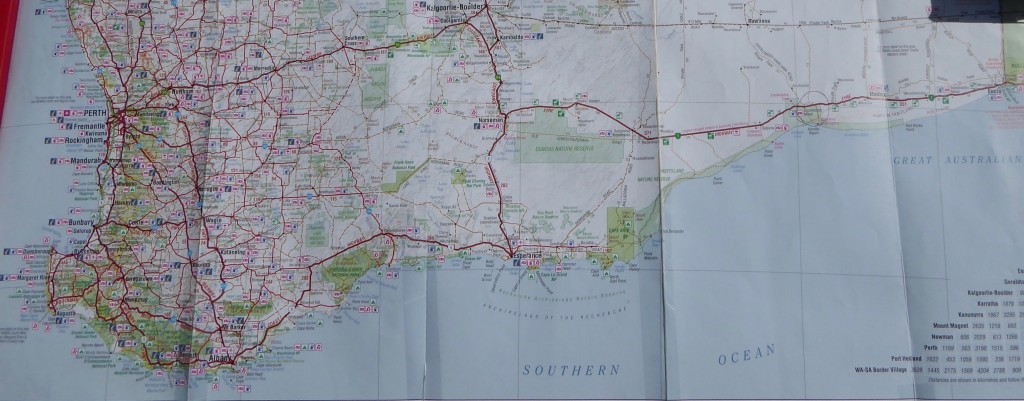 We farewelled Albany after three nights of relentless cold wind. We’d weakened and booked a cabin for our stay but we thoroughly enjoyed the time there (especially since we were snug in a cabin and not a tent!) We headed west, calling into Cheyne Beach but we weren’t enticed to stop so soon. Bremer Bay, 180 km further east, looked a lot more interesting. It’s a tiny village on the mouth of the Bremer River which doesn’t seem to reach the sea all that often, currently just trickling into a lake behind a sandbar.
We farewelled Albany after three nights of relentless cold wind. We’d weakened and booked a cabin for our stay but we thoroughly enjoyed the time there (especially since we were snug in a cabin and not a tent!) We headed west, calling into Cheyne Beach but we weren’t enticed to stop so soon. Bremer Bay, 180 km further east, looked a lot more interesting. It’s a tiny village on the mouth of the Bremer River which doesn’t seem to reach the sea all that often, currently just trickling into a lake behind a sandbar.
 About an hour’s drive off the main highway, Bremer Bay has some 240 residents, and a lot more at other times, judging by the number of holiday homes. A tall wind generator catches your eye as you approach. The town is powered by a hybrid wind and diesel system – big tick! There’s so much wind and sun along this coast it’s crazy not to harness the free energy supply. We set up the tent in a great campground just 200 m from the water, and spent the next couple of days exploring the coast, finding many lovely bays like this one with an unusual wind and tide sculpting. I think it’s called James Bay.
About an hour’s drive off the main highway, Bremer Bay has some 240 residents, and a lot more at other times, judging by the number of holiday homes. A tall wind generator catches your eye as you approach. The town is powered by a hybrid wind and diesel system – big tick! There’s so much wind and sun along this coast it’s crazy not to harness the free energy supply. We set up the tent in a great campground just 200 m from the water, and spent the next couple of days exploring the coast, finding many lovely bays like this one with an unusual wind and tide sculpting. I think it’s called James Bay.
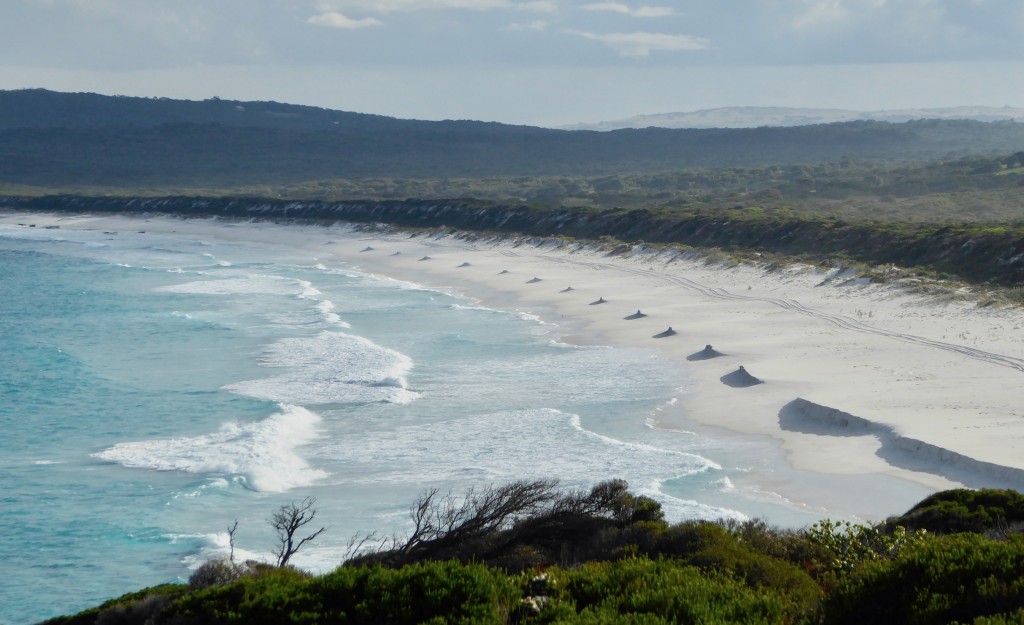 and Native Dog Beach, a popular surf location:
and Native Dog Beach, a popular surf location:
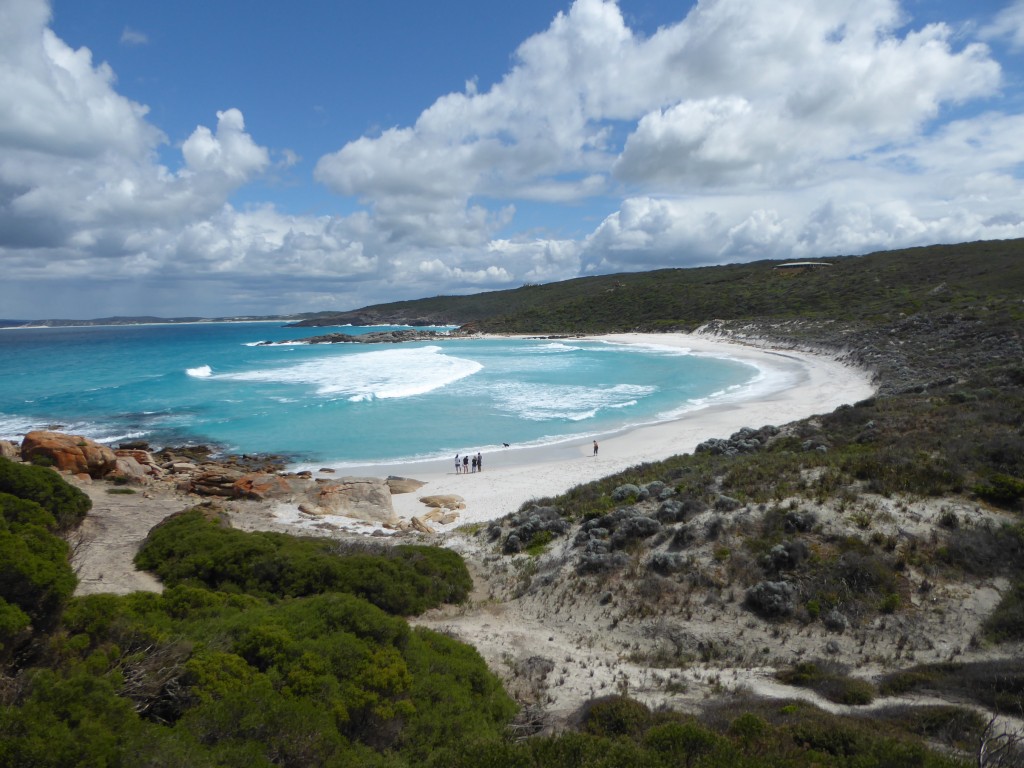 The car needed a service, so we ditched the idea of driving up to Wave Rock, booked the car in and headed for Esperance. It turned out the service centre was around the corner from the best campground, as advised by my aunt in Hopetoun. (As we approach a new town Lex asks “So who are you related to here?”)
The car needed a service, so we ditched the idea of driving up to Wave Rock, booked the car in and headed for Esperance. It turned out the service centre was around the corner from the best campground, as advised by my aunt in Hopetoun. (As we approach a new town Lex asks “So who are you related to here?”)
Esperance. It’s the last town on the south coast of Western Australia if you’re heading east. And as we discovered, it has some of the most stunningly gorgeous coast anywhere we’ve seen. Maybe the next stunning beach just cancels out the one before? I don’t know. But Esperance truly has some beauties. As my cousin said “If you think Albany’s lovely, wait till you get to Esperance.”
The first thing we noticed was the colour of the water, and then the islands! The Recherche Archipelago lies just offshore and there are 110 islands out there. We began with the highly recommended Great Ocean Drive, a 40km circular journey. Words can’t do it justice so here is a short photographic essay:
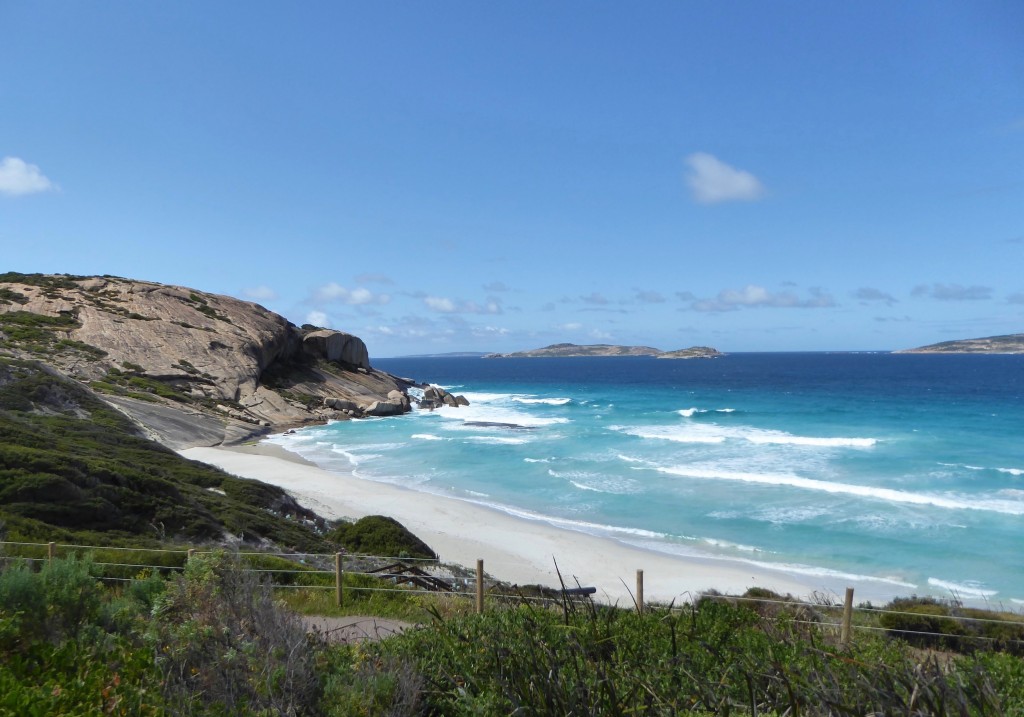
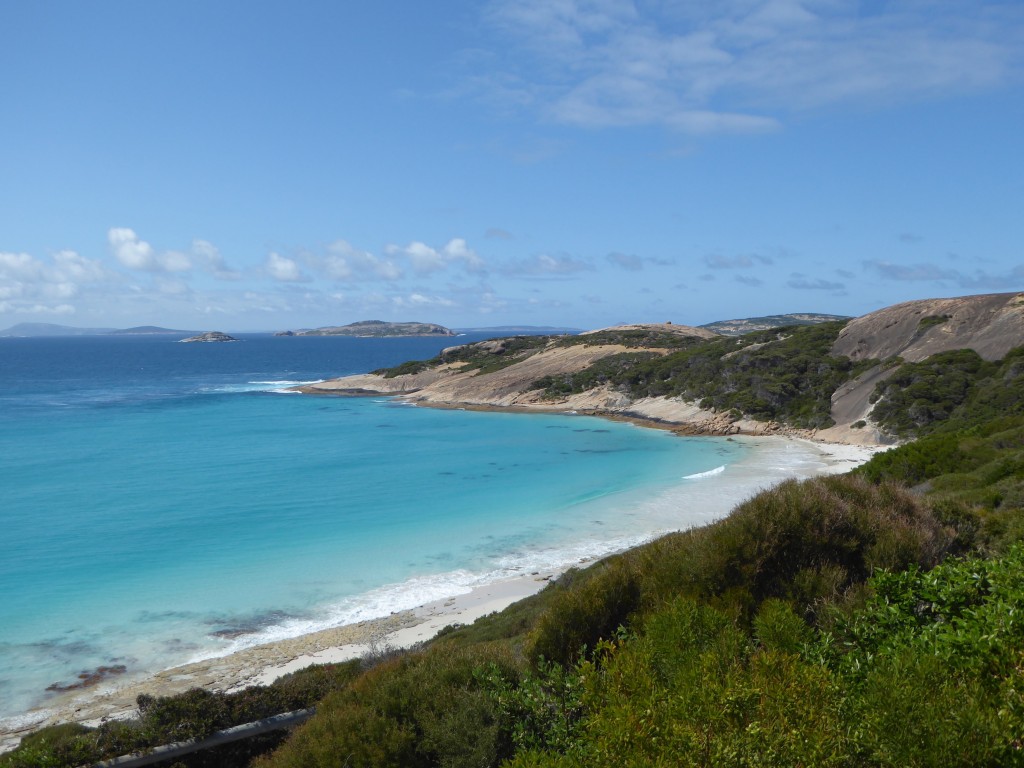
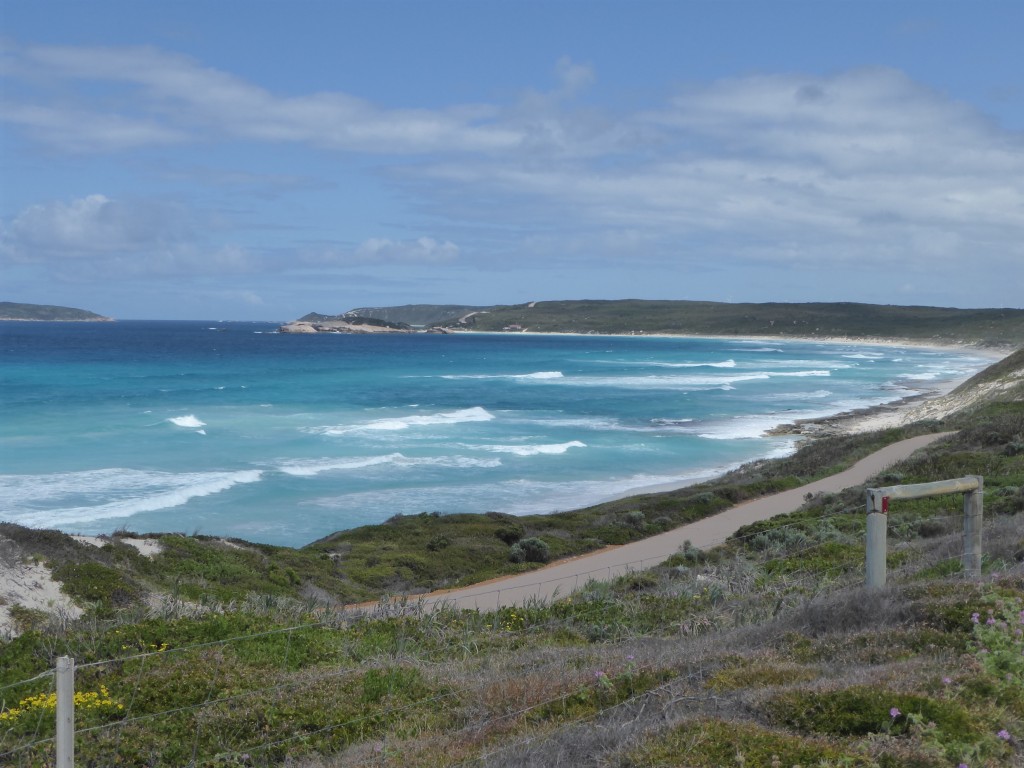
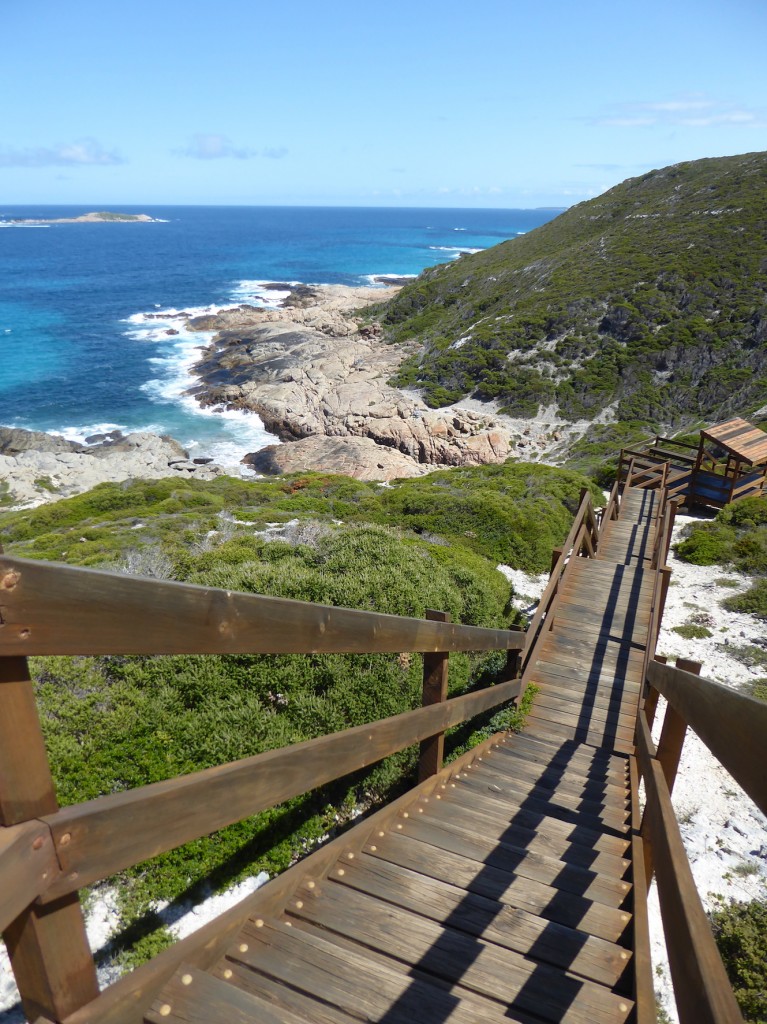
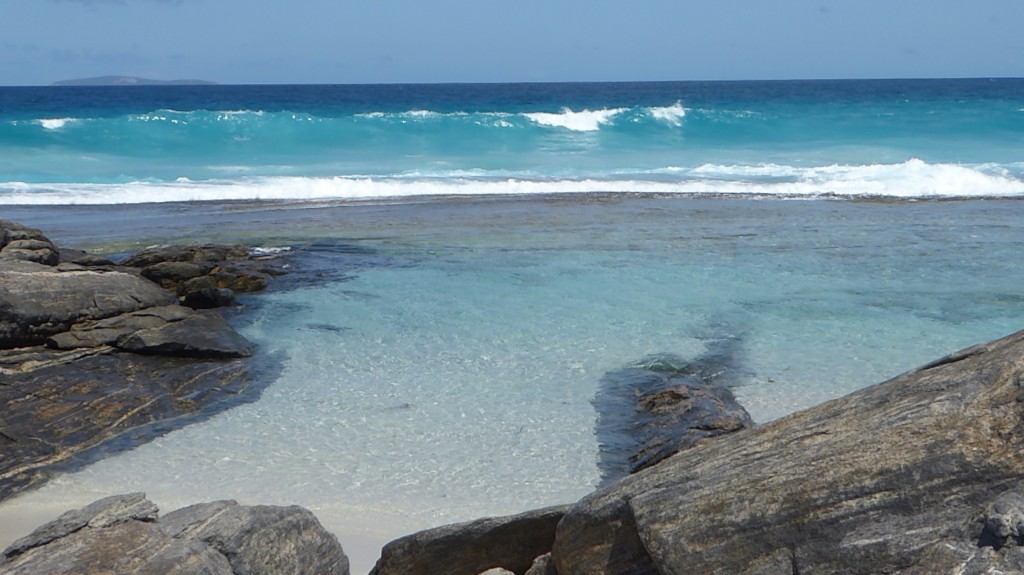
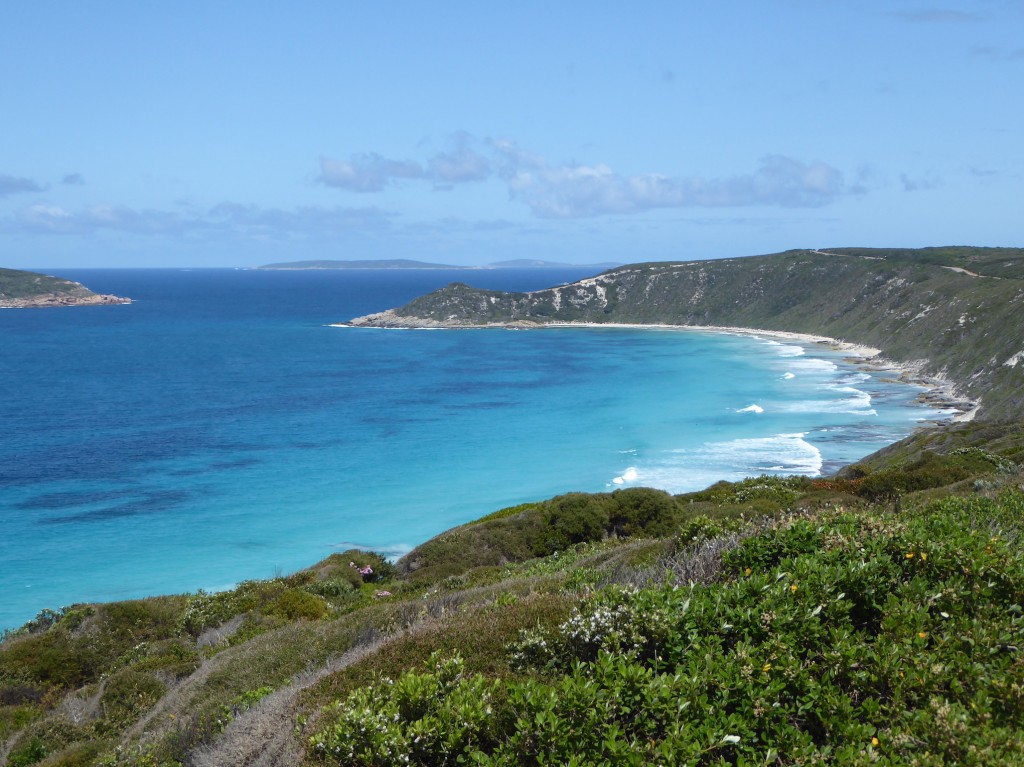 That’s probably quite enough shades of blue for the time being. The drive heads inland to the Pink Lake. Which isn’t pink at the moment.
That’s probably quite enough shades of blue for the time being. The drive heads inland to the Pink Lake. Which isn’t pink at the moment.
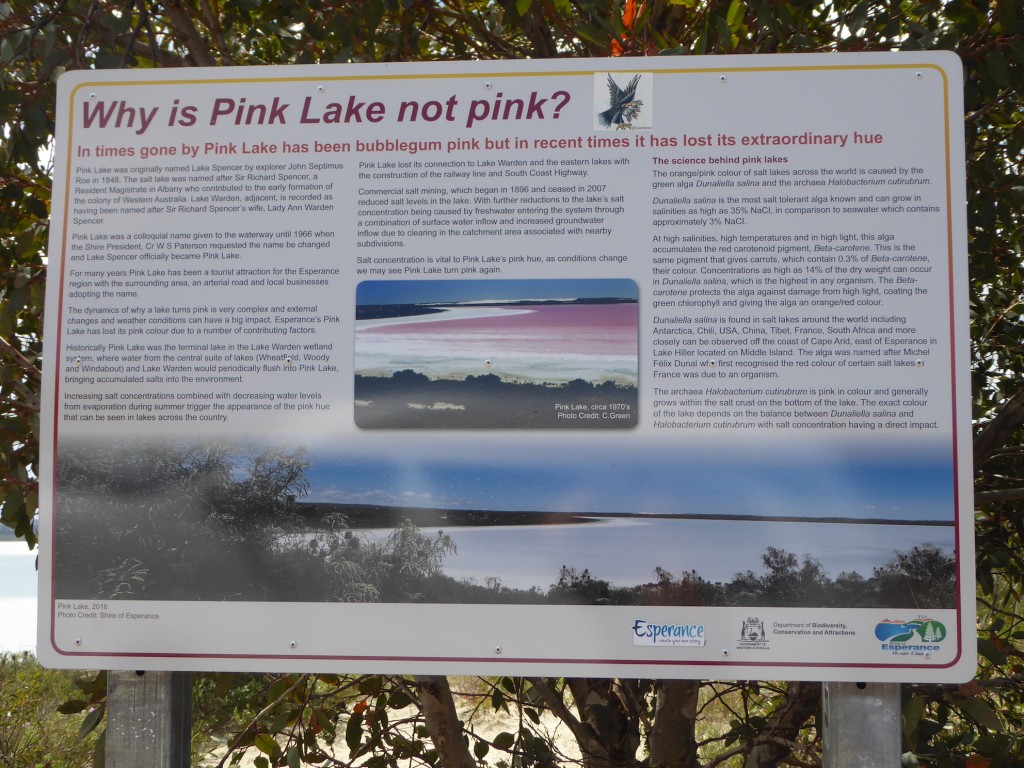 The lake is not as salty as it used to be, so the colour has disappeared. A couple standing near us were very offended. “What a waste of time! Why is it called the Pink Lake if it’s not bloody pink?” and left in high dudgeon. Pity they didn’t bother to read the sign. The most famous beach however, which doesn’t offend anyone, is Lucky Bay, to the east of Esperance, inside the Cape Le Grand National Park. In 2017 it was scientifically tested to have “the whitest sand in Australia, possibly the world…” It is very white. And squeaky. Sorry, but this means another blue photo…
The lake is not as salty as it used to be, so the colour has disappeared. A couple standing near us were very offended. “What a waste of time! Why is it called the Pink Lake if it’s not bloody pink?” and left in high dudgeon. Pity they didn’t bother to read the sign. The most famous beach however, which doesn’t offend anyone, is Lucky Bay, to the east of Esperance, inside the Cape Le Grand National Park. In 2017 it was scientifically tested to have “the whitest sand in Australia, possibly the world…” It is very white. And squeaky. Sorry, but this means another blue photo…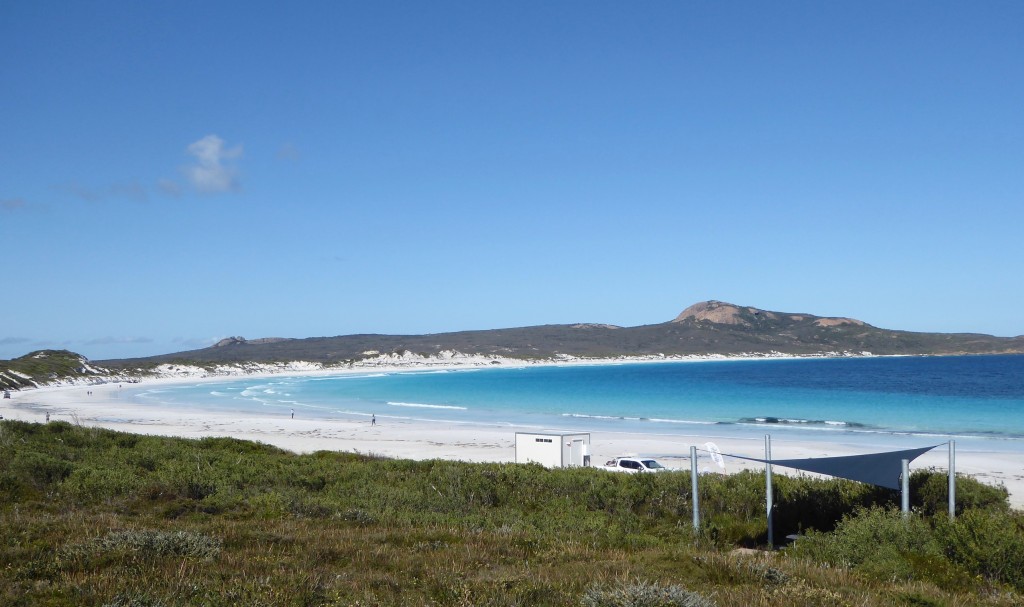
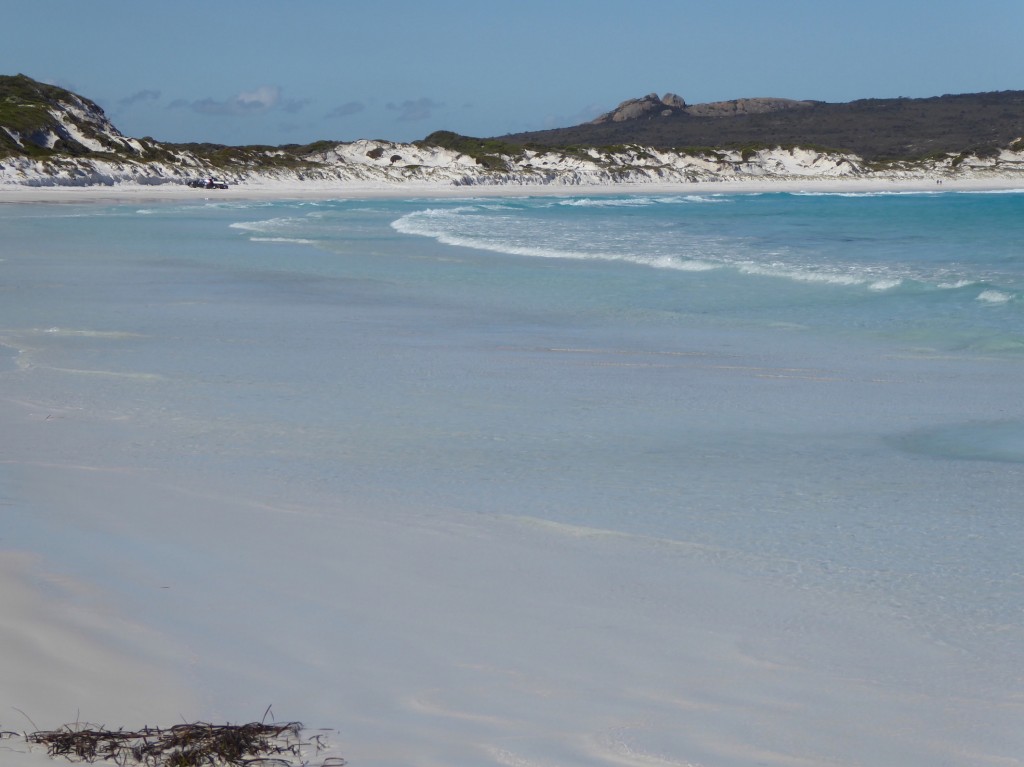 The little trailer in the front of the first shot, is a pop-up coffee wagon. So you can walk on the whitest, squeakiest beach, and drink a very good coffee, 70 km from town. There’s a very popular campground here which doesn’t take bookings but is full by 10am every day. You can see cars in the distance – even in this iconic spot. Maybe it’s our Victorian genes, but we just cannot bring ourselves to drive onto a beach!
The little trailer in the front of the first shot, is a pop-up coffee wagon. So you can walk on the whitest, squeakiest beach, and drink a very good coffee, 70 km from town. There’s a very popular campground here which doesn’t take bookings but is full by 10am every day. You can see cars in the distance – even in this iconic spot. Maybe it’s our Victorian genes, but we just cannot bring ourselves to drive onto a beach!
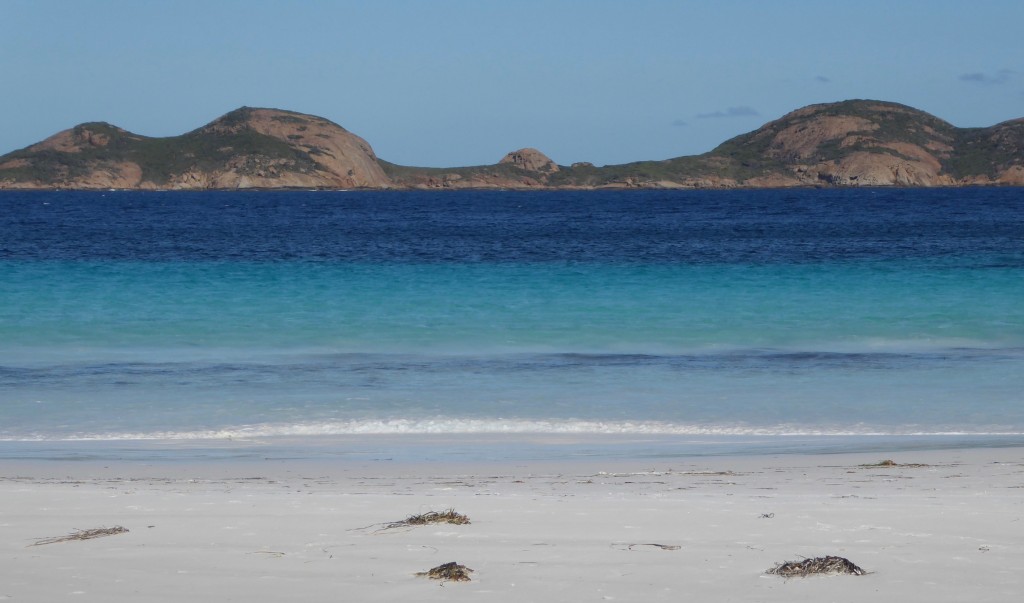 This last photo is typical of southern West Australian beaches. The sand and the many shades of turquoise water could be in the tropics anywhere, but the hills behind – or in this case the islands in front – are dry and stony and stark. It is such a contrast that it delivers a raw beauty all its own. Gently waving palm trees would be gilding the lily.
This last photo is typical of southern West Australian beaches. The sand and the many shades of turquoise water could be in the tropics anywhere, but the hills behind – or in this case the islands in front – are dry and stony and stark. It is such a contrast that it delivers a raw beauty all its own. Gently waving palm trees would be gilding the lily.
Close by Lucky Bay are the Whistling Rocks, legendary rocks from the Bullenbuk people of Esperance. When the wind blows, and eerie whistling, wailing sound can be heard.
Frenchman’s Cap is another fascinating place, poking up above the low trees and dry plans along the coast here. That Frenchman must have lost a few caps – there’s one in Tasmania too, from memory. The closeup of the eroded cap shows a place that must have provided shelter, or an auspicious and powerful meeting place perhaps.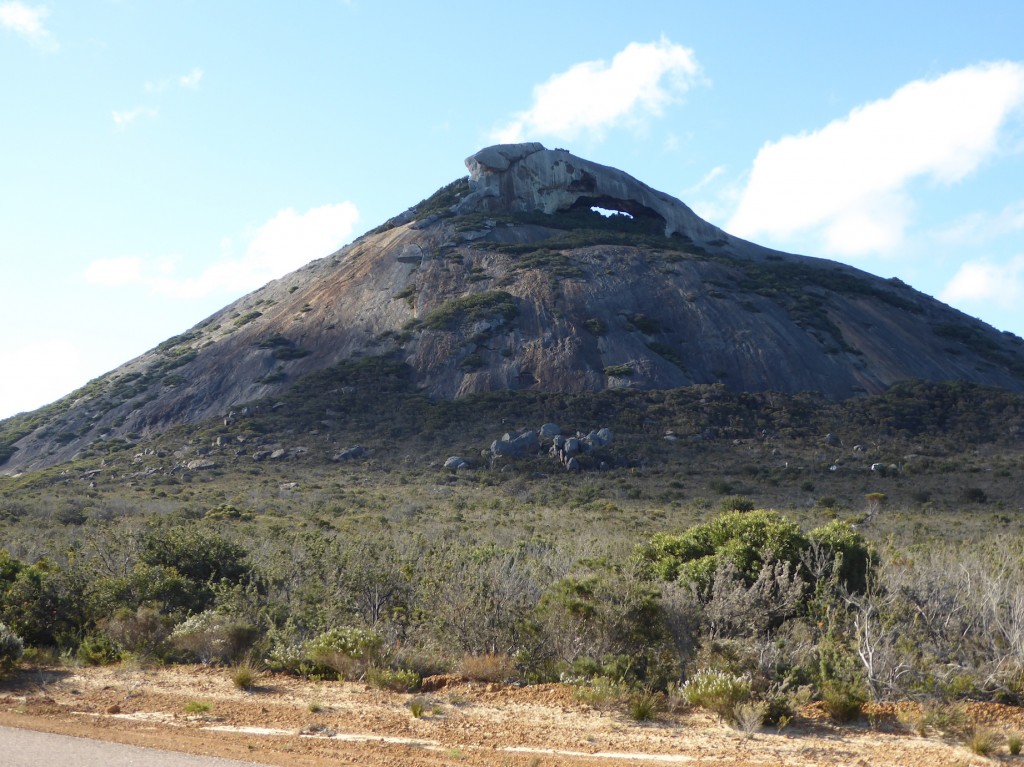
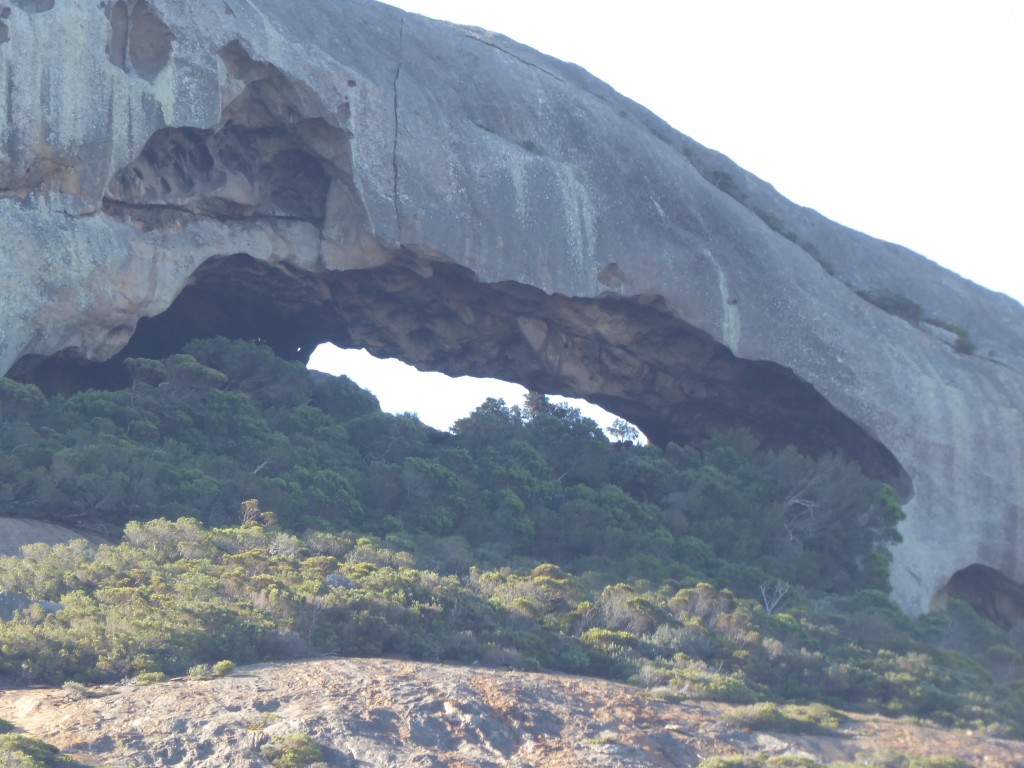 And in case anyone was wondering – we haven’t run out of flowers! Trying to restrain myself, so here’s just three… lovely dark pink Calytrix similis, bright orange Lambertia inertmis or Chittick, and beneath the Frenchman’s Cap, an interesting small white tree with leaves like a Melaleuca.
And in case anyone was wondering – we haven’t run out of flowers! Trying to restrain myself, so here’s just three… lovely dark pink Calytrix similis, bright orange Lambertia inertmis or Chittick, and beneath the Frenchman’s Cap, an interesting small white tree with leaves like a Melaleuca.
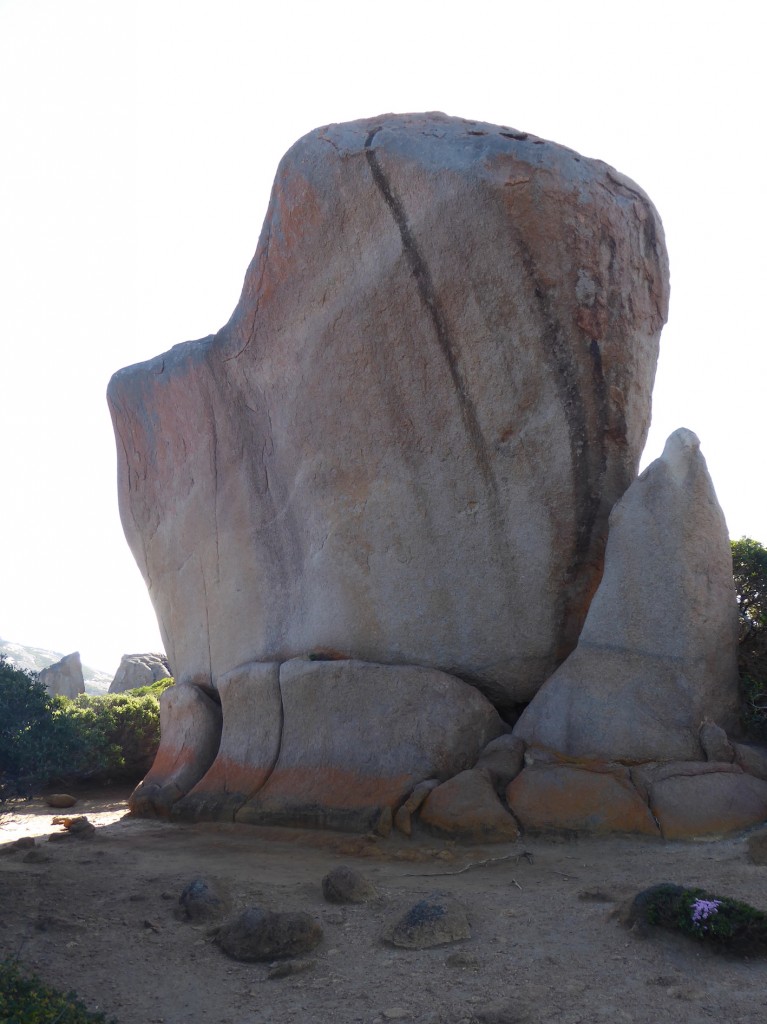
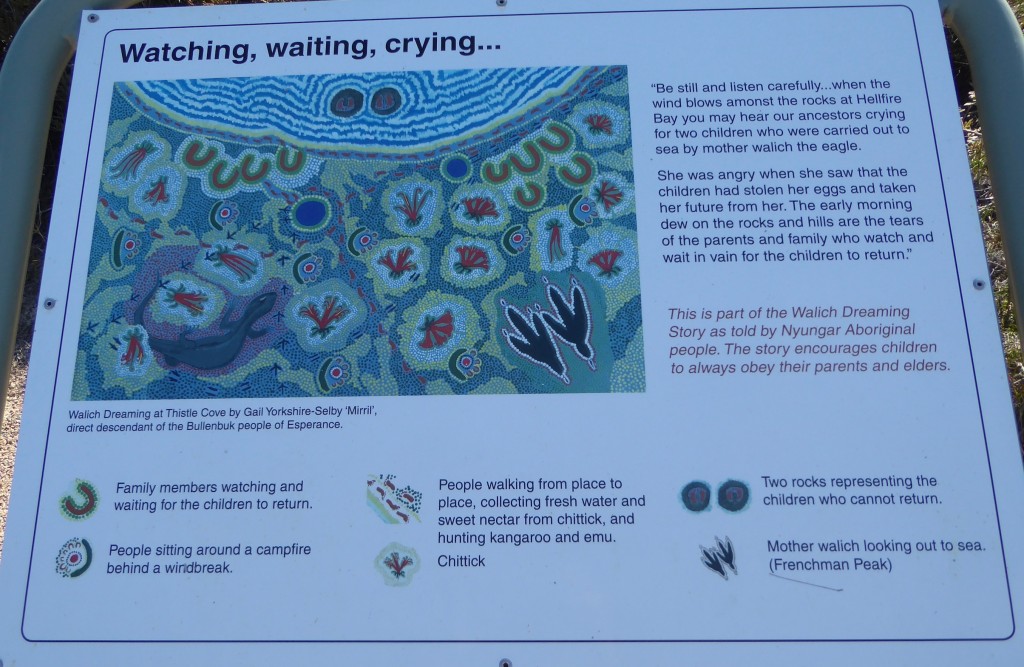
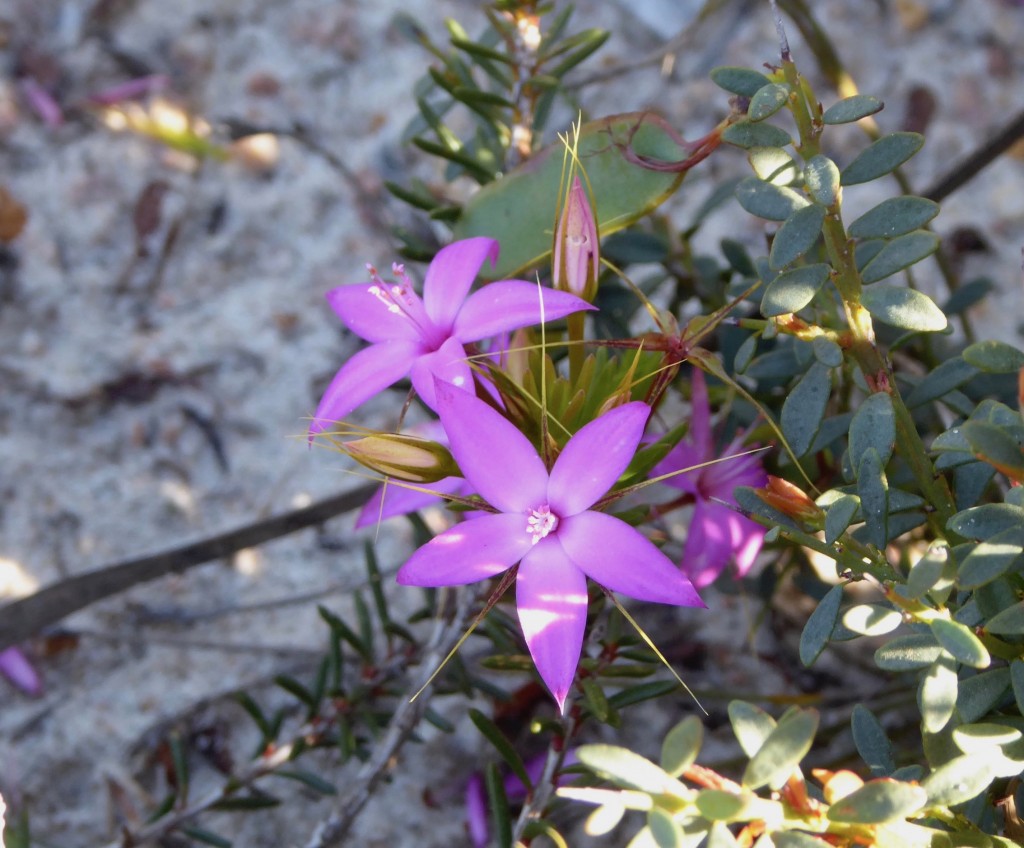
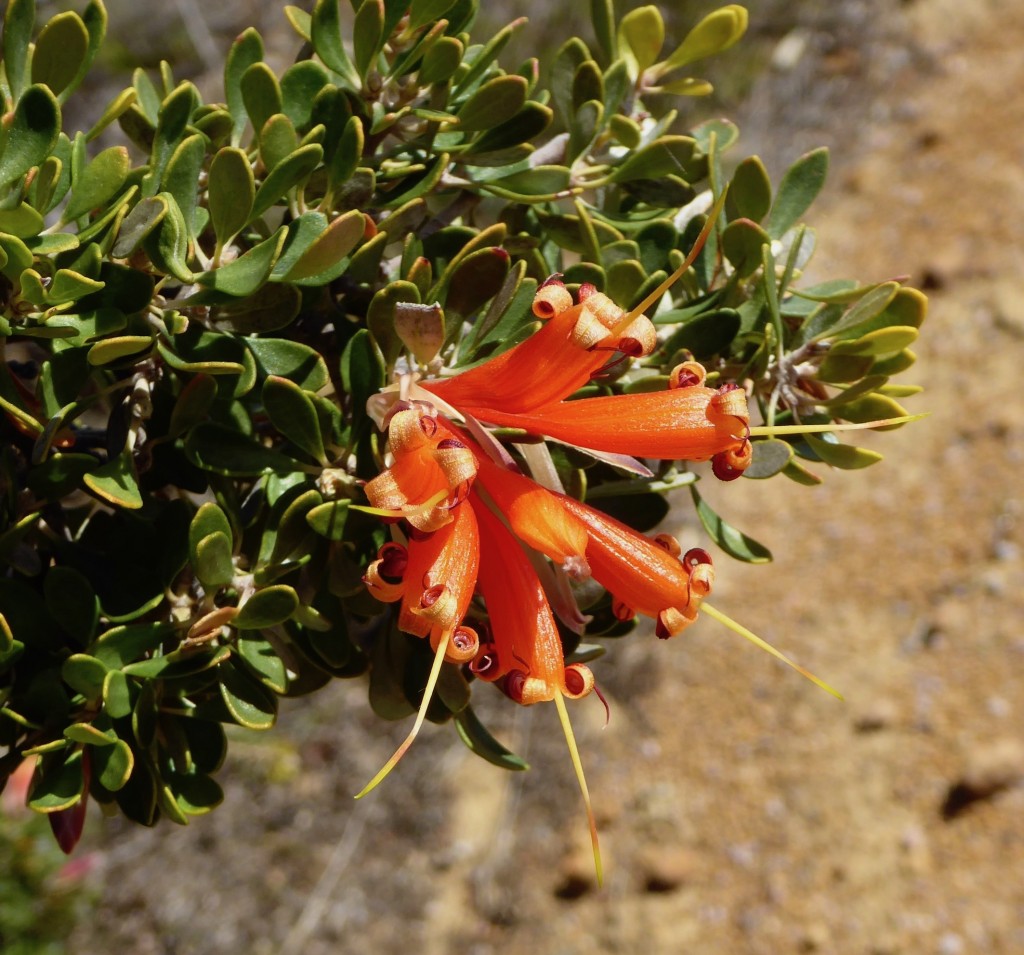
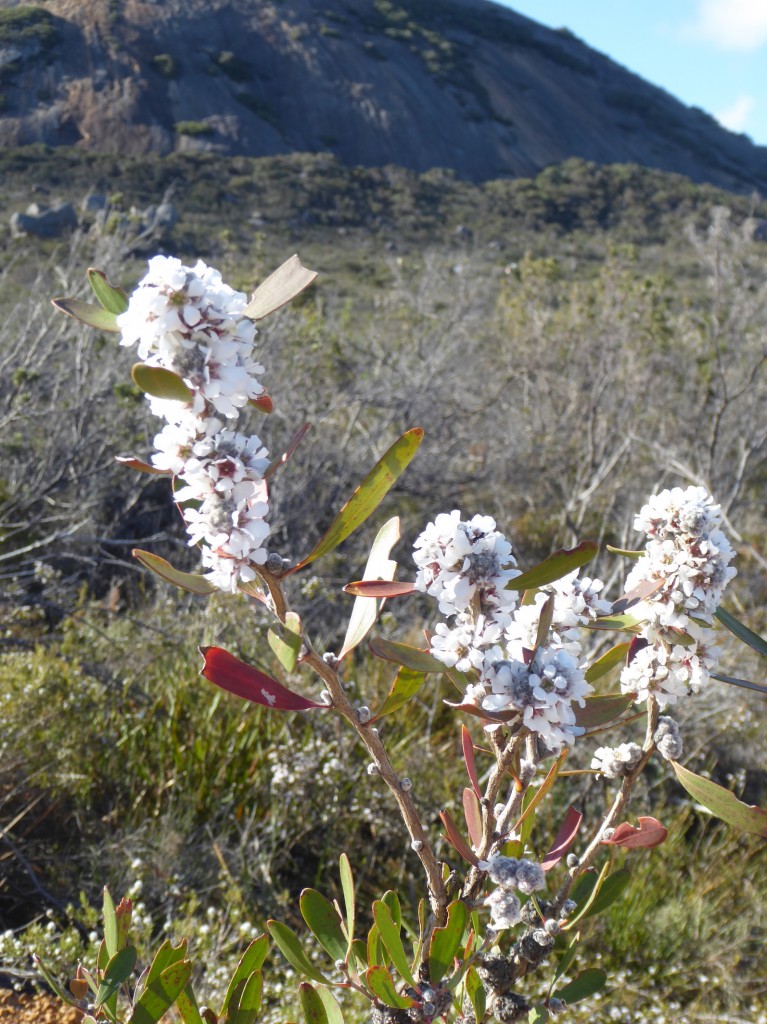
Wow! For all of the pics you took, I can’t stop watching the beaches and the sea, wonderful! It makes me feel well, while outside in Quebec it’s minus 8 Celsius. Thanks for sharing, I loved it.
I’m glad you are enjoying it Rachel – I hope it warms you up in cold Quebec!
In Jan.1962 my father, and sister drove from Sydney to Perth in a mini minor and back in 3 weeks. Dirt most way from Ceduna to KalgoolieGreat trip.. walked out along the Esperance wharf and went down the Cocklebidfy caves too
Agree amazing coastline
That would have been amazing in a Mini! Peter and I drove across with Pat and Bill in ’72, and it was gravel from Ceduna to Eucla, but a good road.